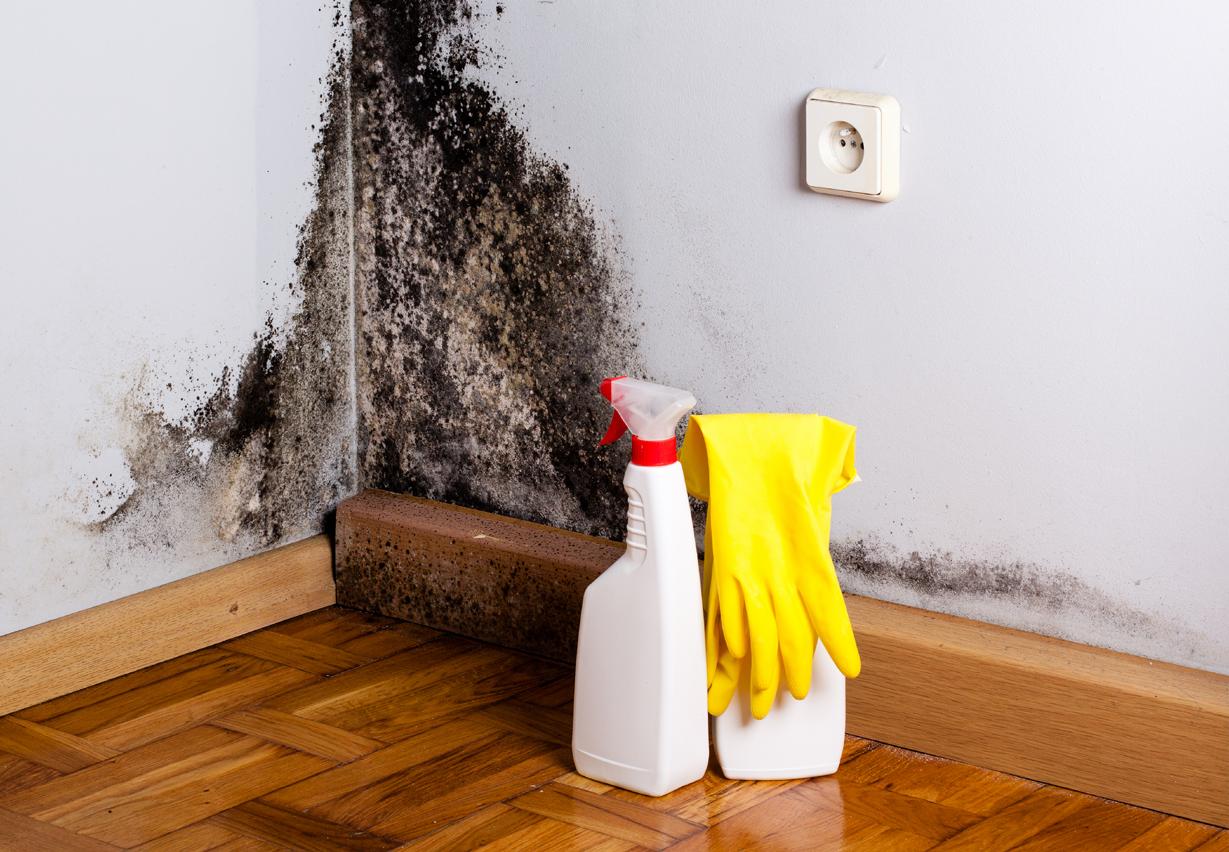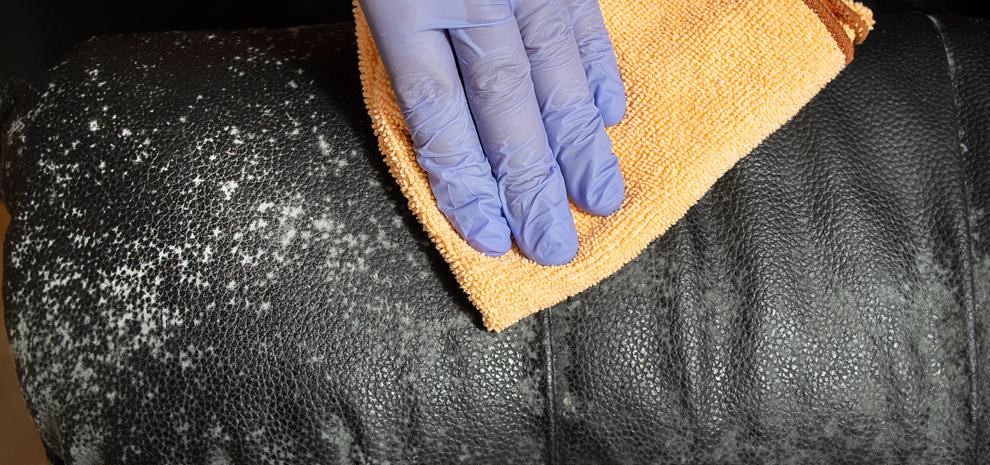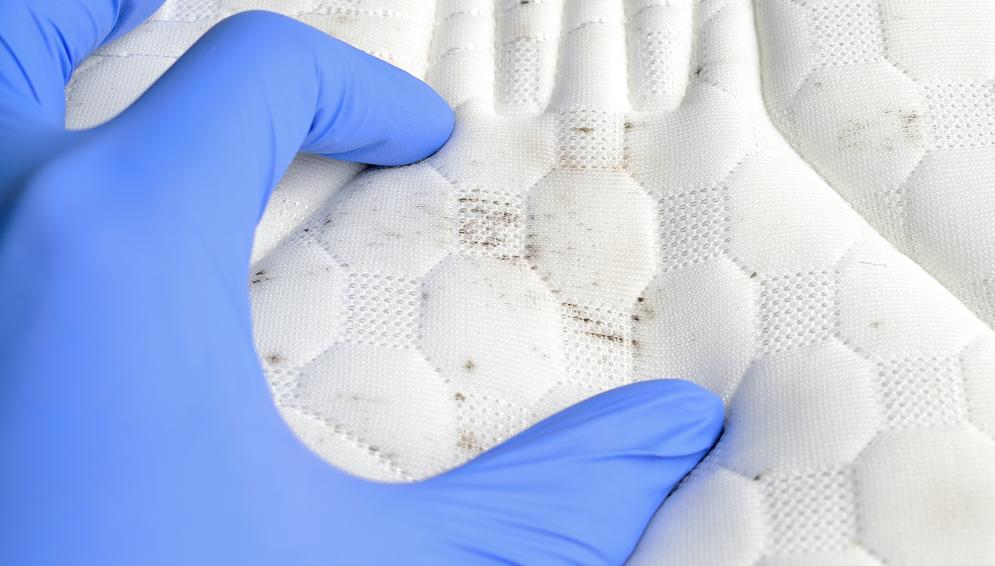




If you know you’ve been exposed to mold and it’s making you sick or if you suspect your illness has been caused by mold exposure, you’ve come to the right place. This is the most definitive guide on mold toxicity.
First, here are the top mold exposure symptoms:
1. Fatigue and weakness
2. Headaches; light sensitivity
3. Poor memory, difficult word finding
4. Difficulty concentrating
5. Morning stiffness; joint pain
6. Unusual skin sensations, tingling, and numbness
7. Shortness of breath, sinus congestion, or a chronic cough
8. Appetite swings; body temperature regulation
9. Increased urinary frequency or increased thirst
10. Red eyes; blurred vision; sweats; mood swings; sharp pains
11. Abdominal pain; diarrhea; bloating
12. Tearing; disorientation; metallic taste in mouth
13. Static shocks
14. Vertigo; feeling lightheaded
Do you have five or more of these symptoms? If so, let’s dig into what you can do to combat mold exposure.
There are three major sections of Your Complete Mold Exposure Guide:
I. Suspect mold exposure is the cause of your symptoms? Your first steps and testing.
II. Mold clean up, step-by-step.
III. The low mold diet.
Let’s begin!
Suspect mold exposure is the cause of your symptoms? Here are your first steps, including testing.
We now spend about 90% of our time indoors, and mold is estimated to be in about 50% of homes. Together these two statistics create a perfect storm for causing or aggravating CIRS symptoms. This is why I always recommend anyone with mold toxicity or CIRS has their home and office checked.
You should have an ERMI mold test completed by a trusted inspector. If you find your home or office contains mold spores, you must find the source and get a certified specialist to properly remediate. This includes removing yourself temporarily from the environment, remediation, and removal of any porous items from your abode.
Look, I get it.
Finding mold in your home or office can be scary. And the prospect of having to uproot your life can seem like a nightmare, but I assure you it’s essential if you want a full, healthy life.
When I discovered our office was moldy, I was unable to remediate so I left immediately. I left all of my belongings behind and moved on. It was tough to lose all of my twenty years of medical books I had acquired, but regaining my health was worth it in the end. The benefits to the health of my staff and myself (I’m the canary in the coal mine when it comes to mold) FAR outweighed the loss of belongings or cost of remediation.
Life is too short to let the fear of finding mold in your home or office keep you from finding solutions to your illness! Your health is the most priceless thing you own.
If you find mold, skip below to the section on Mold Clean Up Step-by-Step.
There isn’t one definitive test for mold exposure. Instead, you’ll need a combination of:
a. Medical and environmental history
b. Physical exam
c. Screening tests:
• Visual Contrast Sensitivity test
• Cluster symptom analysis
d. Lab Testing:
• CIRS labs
• Biotoxin Mold Illness Panel
• HLA-DR Mold Genetic testing
• Great Plains MycoTox testing
• RTL Mycotoxin testing
• Immunolytics
• EnviroBiomics
• Vibrant Mycotoxin testing
• Mycometrics ERMI (for environmental home testing) and IEP inspector
You’ll need the help of a functional medicine doctor who is experienced with mold illness to complete this process and confirm the diagnosis.
It’s a little-known fact that most indoor air is actually worse than the pollution outside.
Even if your home and office pass the mold inspection, there are tons of other indoor air contaminants worth worrying about, including volatile organic compounds, gram negative and positive bacteria, glucans, endotoxins, microbial particulates, non-microbial volatile organic compounds, and microbial volatile organic compounds.
We haven’t evolved to live in contained spaces with recycled air and poor ventilation. So, one of the best things you can do for yourself (and your family) is investing in a high-quality air filter. I recommend Austin Air purifiers because they filter ultra-tiny particles and I’ve had personal success with them. I’m sure there are other great options out there; just make sure you find something that filters at least 0.3 microns in size.
You’re in your home between 8 to 12 hours each day and in your office between 6 to 10 hours. That’s most of your life – don’t you think it’s worth it to clean up your air?
If you’re interested in an Austin Air purifier, you can call the office at 303-993-7910 and receive a 10% discount.
A low mold diet reduces the likelihood that you’re going to be exposed to inflammation causing foods. Even if your CIRS isn’t directly caused by mold exposure, this is a beneficial diet regardless.
Avoid –
• Sugar in all forms
• Processed foods – canned, boxed, bottled, etc.
• Mold and yeast containing foods – cheese, alcohol, condiments, fungi, cured and smoked meats, and dried fruits
• Gluten and grains
• Choose a mold-free coffee, like Purity Coffee
• Organic, pasture-raised animal products
• Low carbohydrate vegetables – broccoli, cauliflower, chard, cabbage, arugula, peppers, tomato (fresh only), cucumber, onion, kale, asparagus, spinach, leeks, garlic, artichokes, etc.
• Raw nuts and seeds – sunflower seeds, pumpkin seeds, flax seeds, chia seeds, almonds, and other low-mold nuts (Avoid peanuts, cashews, walnuts, pecans, and brazil nuts)
• Healthy fats – extra virgin olive oil, coconut milk, coconut oil, ghee, avocado, organic butter, etc.
For a more detailed version of the mold diet, skip to The Low Mold Diet section below.
Binders like charcoal and bentonite clay are great for pulling toxins out of the gut. Anyone living with CIRS should be working to support processes like this and reducing the buildup of toxins, heavy metals, and other chemicals. Binders can also be effective in reducing the impact of mold exposure and other unknown impacts.
My two favorite binders are GI Detox and Coconut Charcoal. These are effective and can safely be taken daily (but not with other supplements). You can read more about these in my article, Safe and Effective Detox Binders that Actually Work.
Incorporate detoxifying and anti-inflammatory techniques and lifestyle changes. An added bonus is that most of these improve health overall and some feel downright great. Detox support can include:
• Infrared saunas
• IV detoxification support (Meyer’s cocktails, IV glutathione, NAD, PC)
• Dry brushing
• Epsom salt baths
• Mineral or alkaline waters
• Neti Pot
Supplements may include:
• Liposomal glutathione
• N-acetylcysteine
• Milk thistle
• Calcium-d-glucarate
• Alpha lipoic acid
• Glycine
• Glutamine
• Taurine
• Sulphoraphanes
CIRS is a war of attrition and the less you feed the inflammatory pathways while supporting detox, the better off you’re going to be.
Other factors you might want to consider include:
• Reducing chemical exposures – think plastics, cosmetics, cookware, and cleaning products. For more information, read: The Truth About BPA and How to Avoid This Toxic Health Hazard and Are Endocrine-Disrupting Chemicals Destroying Your Body? Even at Extremely Low Doses?
• Reducing EMF exposure by: staying away from power lines, mobile phone towers, broadcast towers and similar transmitters; turning your mobile phone off or switching into airplane mode, and turning your internet router off when you sleep. For more information, read: The Dark Side of Technology: How to Protect Yourself From EMFs
• Filtering drinking water

Mold illness can be sneaky and symptoms may seemingly come from nowhere. Mold illness symptoms can range from mild flu-like symptoms you can’t shake to debilitating fatigue that makes getting through the day tough.
When you Google “Mold Exposure” for more information, all you find are dramatic photographs of black mold – something you just don’t see in your home. It’s important to know that not all mold can be seen by the human eye.
Let’s look at ways to clean up harmful mold and reduce its impact on your life.

Mold thrives in moist and warm conditions. When these conditions combine with a suitable food source, mold can spread very quickly, often in unseen places. Mold easily lives on paper, cardboard, wood, fabric, carpet, drywall, and many other common building materials.
The underlying causes of mold include:
• Moisture: Ensure any water pipe or roof leaks are fixed. If the property has a history of flooding, you need to evaluate the risk of it happening again and maybe even consider a house move. Extensive flooding increases the risk of mold contamination. I recommend removing wet carpet from your property as soon as possible because it encourages not only the growth of mold but also bacteria.
• Holes and gaps in the walls: Look out for cracks in walls or windows – they may be letting mold in through your external walls.
• Condensation: If the warm air inside your property hits a colder surface, like your windows, it causes interior condensation. This often leads to mold eating away at wooden window frames. To specifically target your windowsills, moisture eliminator products are useful. However, if you suspect mold elsewhere in your house, they won’t be effective.
• Air Conditioning units: Your air conditioning, heating, and ventilation units need regular maintenance and cleaning to ensure that they are not the culprit. They could be circulating fungus spores around the house. Get an expert to look into it and consider getting a HEPA air scrubber to clean the air.
• Humidity: I advise you purchase one or more dehumidifier units, depending on the size of your home. A dehumidifier ensures you can keep the humidity of your property around the 50% mark – mold finds it harder to multiply in drier air.
If this list seems intimidating, bear in mind you can hire a remediation company to assess, contain, and remove the mold. Make sure you pick a company certified in mold remediation.

Mold loves fabric, making most furniture a potential hub for mold. If you are cleaning up after a large leak, I recommend removing the carpet completely. In mold infestation cases where the carpet has not gotten wet, it’s a good idea to buy a high-efficiency particulate arrestance (HEPA) vacuum cleaner to clean your carpet.
You must choose a true HEPA vacuum cleaner, not one that is labeled ‘HEPA like.’ HEPA vacuum cleaners utilize a strong motor and fine filter to suck up everything, including mold spores, whereas regular vacuum cleaners suck up the mold spores –only to deposit them back into the air.
When using your true HEPA vacuum cleaner:
1. Make sure you vacuum from every angle. When vacuuming, it’s easy to get into the habit of pushing the machine across your carpet in the same direction. Many modern vacuum cleaners have a more flexible design, meant to get into difficult corners or underneath furniture. Use it from every direction possible to remove as many mold spores as possible.
2. Empty your vacuum cleaner outside. If your vacuum model is bagless, use a disposable wipe to clean out the canister fully. Avoid breathing in the dust by wearing an N-95 respirator. If your vacuum cleaner uses bags, ensure you wear protective gloves, respirator, and clothing to avoid carrying the spores back into your home.
3. As the dirt, dust and mold spores in the fibers may have been accumulating for years, don’t be disheartened if you don’t see an immediate improvement in the state of the carpet or your health. It may take several long sessions of vacuuming before you start to feel the benefits.

Mold removal is not straightforward when it comes to soft furnishings and clothes. If you use biocides such as diluted bleach and vinegar, the mold on the fabric dies, but the mycotoxins continue to be an allergen. It is not enough to kill the mold; it needs to be completely removed.
Also, using harsh chemicals such as bleach on fabrics is hardly ideal. Unfortunately, wiping upholstery doesn’t remove the mold from the stuffing inside. And dry cleaning can cause cross-contamination from other sources.
Instead, I recommend borax, also known as sodium borate which is a mineral and a completely natural solution for cleaning mold. Borax also combats bacteria.
Mix 1 cup of borax to 1 gallon of water and soak your clothes for half an hour before putting them in the wash. Borax works well on mold because it’s alkaline, making an inhospitable place for the mold, which prefers a lower pH environment. You must take care when using it – always wash your hands after handling clothes that have been treated with it and avoid getting it in your mouth or eyes.
My favorite easy to use laundry additive is Micro Balance Health Products E3C and I add to every load of laundry just to be safe!

Mold loves hard surfaces, especially wood or plaster. Luckily, borax is suitable for most furniture.
Be wary of the claims made by most household cleaners. Just because a surface is sparkling and clean-looking, it’s no indication of how many mold spores are still stuck to it. I recommend the following procedure for a surface that may have been contaminated:
• Use two rounds of disposable wipes to clean the surface.
• Move on to using a dry microfiber cloth to wipe up any excess moisture and mold spores.
• Throw the disposable wipes in the garbage – be careful to avoid crosscontamination of your clothes.
• The microfiber cloths can be washed on a hot wash cycle and reused.
• They are also more effective for everyday cleaning, wet or dry.
Of course, some surfaces are more of a challenge to clean. Mold spores stick easily to surfaces in the kitchen that tend to be coated in grease or cooking oil. I recommend that you cut through the grease with a simple soap or detergent before using borax or the wet and dry cloth method.
If you or a loved one have been diagnosed with a mold-related illness, your doctor may have suggested you remove all items likely to be contaminated – including most of your possessions. While your doctor is interested in your wellbeing, the thought of removing all your favorite things may feel unbearable.
There is also no guarantee that all of your possessions contain mold or mold spores. So it’s important to make well-informed choices.
Possessions you can clean and keep:
• Non-porous items, e.g., metals, glass, etc.
• Jewelry
• Pottery
• Glassware
• Plates and dishes
• Cutlery
• Leather
• Framed artwork (remove from frame, dust and reframe)
Possessions that require more thought:
• Anything made of paper
• Paperwork & important documents
• Books
• Photos
• Old letters
• Yearbooks
Books and paperwork are hard to clean adequately, and book conservationists recommend wearing protective clothing and masks when handling mold-damaged books. It may be time for you to go digital. Photos, old letters, and yearbooks can also be digitalized, saving you from heartache.

Rugs and furnishings:
• Antique rugs
• Bed, mattress, pillows, and bedding
• Taxidermy
• Indoor plants
• Holiday decorations
You need to replace your bed completely, as it is the only way to make sure you’re not exposed to mold in your sleep. Indoor plants and taxidermy are prime sources for mildew. Antique rugs are just as bad as a carpet for attracting mold and are harder to clean.
Non-washable clothes and accessories:
• Shoes
• Bags
• Dry clean only items
• Non-waterproof watches
• Stuffed animals
• Plastic toys that are difficult to clean adequately
Whether it’s your childhood bear or a recent addition to your child’s collection of toys, it is unlikely that a spin in the washer removes mold spores or toxins.
• Refrigerator
• Washer and dryer
• Air conditioner or purifier
• Home computer or laptop
• Televisions and stereos
Washers and dryers are often a source of cross-contamination, as mold can grow inside the drum. It is difficult to clean the back of refrigerators properly. Modern electronics are hard to clean inside, and a compromised computer often blows out mold spores whenever the fan starts up. An air conditioner or purifier can also cause contamination when brought into a clean environment.
• Open food packets
• Jars of rice, flour, spices, and etc.
• Open cosmetics and toiletries
Whatever you decide, you’ll need to clean and store many of your possessions in sealed boxes in an external location from your home while you work on your mold issue. It’s possible that you will need a few months to sort through your possessions.
I touched upon cross-contamination in relation to removing personal items, but there are many ways you can avoid contaminating your home once you have removed the mold. Some of these actions may seem extreme but it’s the only way to ensure that your mold illness doesn’t come back.
1. Reintroduce cleaned possessions into your home slowly, over a period of months, to ensure that each item is mold free.
2. Domestic dogs or cats need to be boarded elsewhere. They need to be washed fully with an antifungal shampoo and shaved before they can return to the household.
3. When cleaning possessions, surfaces, or removing the contents of your vacuum cleaner, do so outside, wearing protective gloves, a N-95 respirator, and protective clothing. Never walk into your property wearing this protection as it could cause cross-contamination.
4. Wrap everything you intend to remove from your home in plastic bags –doubled up.
5. If you suspect a second source of mold contamination (e.g., your office) you can use a mold spray such as Concrobium or EC3 Mold Solution on your clothes and everyday belongings to avoid cross-contamination.
6. Remember that certain items can survive mold spray decontamination better than others. Avoid bringing papers, books, used computers, and soft furnishings that may already be compromised into the house.
Above all, though it can be tempting to make a number of huge changes all at once, I recommend consulting a doctor that specializes in mold illness and taking action a little at a time. I hope this helps you know exactly what to do in the case of mold.
UP NEXT: The Low Mold Diet

Use this guide to shift your diet away from high-sugar and starchy foods to more fresh, whole foods.
Avoid sugar and sugar-containing foods: table sugar and all other simple, fastreleasing sugars such as fructose, lactose, maltose, glucose, mannitol, and sorbitol. This includes honey and natural sugar syrup-type products such as maple syrup and molasses. This also includes all candies, sweets, cakes, cookies, and baked goods.
Sweetleaf whole leaf stevia concentrate may be used in moderation.
Avoid high sugar fruits, such as: Pineapple, mango, banana, melons, oranges, and grapes
Organic berries, apples and lemon/lime are ok.
Packaged and processed foods to avoid:
• Canned – Baked beans, soups, ready-made sauces
• Bottled – Soft drinks, fruit juices, all condiments and sauces
• Boxed/Packaged – Ready-made meals, breakfast cereals, chocolate/candy, ice cream, frozen foods
Avoid canned, bottled, boxed, and otherwise processed and pre-packaged foods as they more often than not contain sugar of one type or another.
Mold- and yeast-containing foods to avoid:
• Cheeses: all cheese (especially moldy cheeses like Stilton are the worst), buttermilk, sour cream and sour milk products
• Alcoholic drinks: beer, wine, cider, whiskey, brandy, gin and rum
• Condiments: vinegar and foods containing vinegar, mayonnaise, pickles, soy sauce, mustard, and relishes
• Edible fungi: all types of mushrooms and truffles
• Processed and smoked meats: sausages, hot dogs, corned beef, pastrami, smoked fish, ham, and bacon
• Fruit juices: All packaged fruit juices may potentially contain molds
• Dried fruits: raisins, apricots, prunes, figs, dates, etc.
Foods ok to be eaten in small amounts:
• Gluten-free grains: brown rice, quinoa, buckwheat, millet, teff, and certified gluten-free oats
• High starch vegetables and legumes: sweet corn, potatoes, beans, peas, lentils, sweet potatoes, squashes, turnips, and parsnips
• Fruits: low sugar types such as berries, apples, pears, and peaches

Foods to be eaten freely:
• Organic pastured animal products: beef, bison, veal, lamb buffalo, wild-caught seafood, poultry, and pastured eggs
• Low carbohydrate vegetables: broccoli, spinach, cauliflower, kale, cabbage, arugula, chard, cucumber, peppers, tomato (fresh only), onion, leek, asparagus, garlic, and artichokes
• Raw nuts and seeds: sunflower seeds, pumpkin seeds, flax seeds, chia seeds, almonds, low-mold nuts (no peanuts, walnuts, pecans, cashews, brazil nuts)
• Healthy fats: extra virgin olive oil, coconut oil, coconut milk, ghee, avocado, and organic butter
• Other: tempeh, miso, and apple cider vinegar
• Beverages: Filtered water, non-fruity herbal teas, mineral water, and fresh veggie juice

I hope this helps! Remember, implement a little at a time and eventually this will become second nature to you. Mold is frustrating for sure but knowing it’s the cause of your symptoms is half the battle. I’ve personally implemented everything above for my own mold illness and know you can too.
You can do it - I believe in you!
